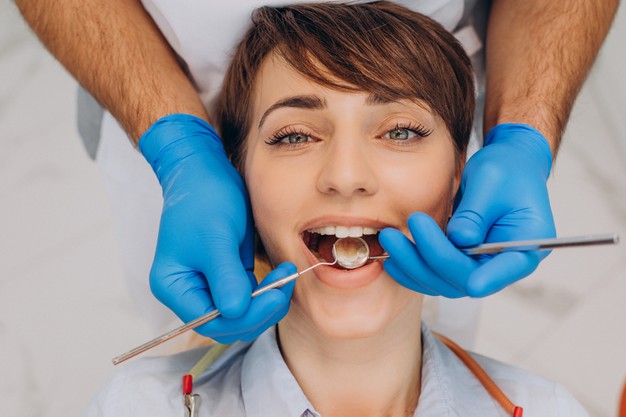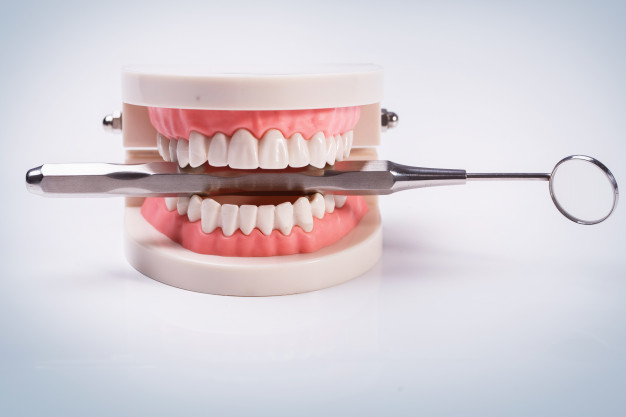Bruxism is an unconscious diurnal or nocturnal habit of variable intensity, which is characterized by clenching and/or grinding of the teeth of the upper arch with the lower arch. It can occur in both children and adults, being more frequent in women.
This clenching or grinding is repetitive, rhythmic and parafunctional, which means that it lacks a functional or useful purpose, and on the contrary, it constitutes a harmful element for the integrity of the tooth structure.
Bruxism is a product of hyperactivity of the muscles involved in mastication, which generates an excessive load on the teeth that affects mastication, compromises esthetics, weakens and deteriorates the structure of the tooth and its supporting structures (it can generate an overload in the periodontal ligament).
Types
Centric bruxism. The clenching is static, affects more the posterior teeth and usually occurs during the day.
Eccentric bruxism. In this type there is grinding and friction between the upper and lower occlusal and incisal surfaces. It is usually nocturnal.
Signs and symptoms
-The characteristic sign of bruxism is the pathological wear of the dental structure (enamel and dentin) to a lesser or greater extent. This loss, known as wear facet, is observed on the occlusal and incisal surfaces of the tooth and generates changes in its shape, size and color.
As the condition progresses and if not properly treated, the teeth will become shorter and shorter and the previously curved surfaces become flat. This is why it is considered a destructive pathology.
When only the enamel is affected it is said that bruxism is mild, when there is affection of the dentin and enamel the tooth begins to look more yellow and it is considered that there is a moderate loss and when there is exposure of the dental pulp the bruxism is severe.
In addition, wear can be aggravated by other alterations present in the dental structures such as: interferences between upper and lower teeth during mastication, defects in the enamel, tooth decay, periodontal disease, dental malpositions, etc.
-Pain and increased sensitivity of the tooth when drinking hot and cold beverages and chewing. It is important to take into account that the more extensive the loss of dental tissue, the greater the sensitivity.
-Pain in the muscles of mastication especially in the masseter and temporalis, which is exacerbated upon awakening and palpation. It may also be accompanied by increased muscle tone and muscle fatigue.
-Headache.
-Temporomandibular joint disorders.
-Alterations in chewing and phonetics.
-Occlusal trauma, where there is damage to the tissues that surround and support the teeth such as the gum and periodontal ligament (radiographically there is a widening of its space).
-Fracture of teeth and restorations.
-In more advanced cases there may be tooth mobility.
-Development of non-carious lesions in the cervical part of posterior teeth such as abfraction.
-Changes in the patient’s facial esthetics: the face appears squarer due to muscular hypertonia and wrinkles are accentuated.
-Alterations in the sleep cycle and quality of sleep: Difficulty in falling asleep, feeling of not having rested.
It is important to mention that many times people who suffer from bruxism are not aware of their situation or attribute their symptomatology to other causes, so this condition can go “unnoticed”. This makes early detection difficult, especially if the individual does not go to the dentist periodically.
What are its causes?
Bruxism has a multifactorial etiology, which means that there is no single factor of origin for this to be triggered, but the union of several elements that may be:
- Situations of excessive and prolonged stress over time which increases the contractile activity and tension of the masticatory muscles. It is said that bruxism is more common in women since they tend to be more prone to develop stress episodes.
- Malocclusions, in which there is a discrepancy in the way the upper teeth mesh with the lower teeth due to interference, malposition or skeletal conditions.
- Drug use and excessive consumption of alcohol and coffee, as these affect the central nervous system.
- Treatment with drugs that alter muscular activity: antidepressants, amphetamines, etc.
- Very demanding and hectic lifestyle with little time for rest.
Treatment alternatives
In order to control this condition and avoid the progression of its symptoms it is necessary to approach the treatment from a multidisciplinary point of view, remember that bruxism is not caused by a single reason but by the conjunction of several.
Due to the above, the treatment alternatives range from dental procedures to those involving other branches of health care and specialists, in order to control the triggering factors and the symptomatology it produces.
Psychological therapy: Indicated for the patient to be able to identify and control those elements that are triggers of stress and anxiety.
Pharmacological therapy: Consists of the prescription of muscle relaxants to reduce muscle tone and tension and analgesics/anti-inflammatory drugs to relieve pain and inflammation. Prescription of anxiolytics to treat anxiety may also be necessary.
Mouthguard: This is a device that is placed when sleeping and its objective is to avoid direct contact between the upper and lower teeth and thus prevent wear from progressing. At the same time, it stabilizes the occlusal contacts and allows a better distribution of forces, thus preventing an excessive load on the components of the temporomandibular joint.
Occlusal adjustment: To eliminate premature tooth contacts or very high restorations.
Other relevant dental treatments: restorative, periodontics, endodontics, prosthodontics or surgery. The overloads that occur in bruxism can worsen the condition of pre-existing oral affections or accelerate the establishment of others.
Physiotherapy: Massage of the affected area, stretching exercises, postural modification, etc.
Sleep hygiene: So that the patients learn and adopt a sleep cycle that allows them to rest and with the amount of hours indicated according to their needs. If the sleep disturbance is accompanied by sleep apnea, the patient should also be referred to a pulmonologist.
Botulinum toxin: When infiltrated in the trigger points, it allows the relaxation of the masseter muscles and prevents their excessive contraction.
All these procedures are intended for the patient to obtain a complete treatment that relieves the symptoms and avoids the progression of the triggering factors.


